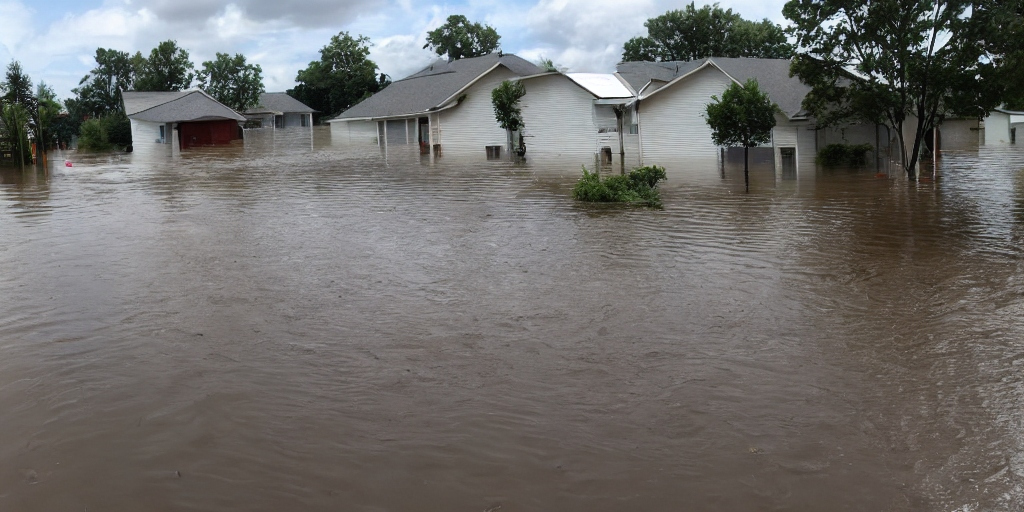Water damage can wreak havoc on your home, leading to extensive destruction and costly repairs. Whether it’s from a burst pipe, severe storm, or flooding, swift action is essential to mitigate the damage and restore your property to its pre-loss condition. In this guide, we’ll delve into the water and flood restoration process, providing valuable insights and tips to help you navigate through this challenging time.
What is Water Restoration?
Water restoration refers to the process of restoring a property that has been damaged by water. It involves a series of steps aimed at drying, cleaning, and repairing the affected areas to prevent further damage and restore the property to a safe and habitable condition.
Also Read: Comprehensive Guide to Water and Flood Restoration Services
The Process of Water Damage Restoration
The water and flood restoration process typically involves the following steps:
- Assessment and Inspection: The restoration professionals will assess the extent of the water damage and identify the source of the water intrusion. This step is crucial for developing an effective restoration plan.
- Water Extraction: Using specialized equipment such as pumps and vacuums, the excess water is swiftly removed from the property. This helps prevent further damage and accelerates the drying process.
- Drying and Dehumidification: Once the standing water has been extracted, the drying process begins. Industrial-grade dehumidifiers and air movers are used to remove moisture from the air and surfaces, ensuring thorough drying of the affected areas.
- Cleaning and Sanitization: All surfaces and belongings affected by water damage are thoroughly cleaned and sanitized to prevent mold growth and bacterial contamination. Specialized cleaning agents may be used to disinfect the area and eliminate odors.
- Repairs and Restoration: The final step involves repairing and restoring the damaged areas of the property. This may include repairing structural damage, replacing damaged materials, and restoring the property to its pre-loss condition.
Restoration Process in Detail
The water and flood restoration process is a meticulous undertaking that requires expertise and precision. Here’s a detailed look at each step:
Assessment and Inspection:
During the initial assessment, restoration professionals will evaluate the extent of the water damage and classify it based on the severity of the damage. This helps determine the appropriate course of action and the resources required for the restoration process. Additionally, the source of the water intrusion is identified and addressed to prevent future issues.
Water Extraction:
Prompt water extraction is crucial for preventing secondary damage such as mold growth and structural instability. Powerful pumps and extraction units are employed to remove standing water from the property swiftly and efficiently. Special attention is paid to areas prone to water retention, such as carpets, upholstery, and drywall.
Drying and Dehumidification:
After water extraction, the drying process commences. Industrial-strength dehumidifiers and air movers are strategically placed throughout the property to facilitate evaporation and remove moisture from the air and surfaces. This helps prevent mold growth and ensures thorough drying of the affected areas.
Cleaning and Sanitization:
Once the property is thoroughly dried, the cleaning and sanitization process begins. All surfaces, including walls, floors, and furniture, are cleaned and disinfected to eliminate any traces of mold, bacteria, or contaminants. Specialised cleaning agents may be used to neutralize odors and restore the property to a clean and sanitary condition.
Repairs and Restoration:
The final step of the restoration process involves repairing and restoring the damaged areas of the property. This may include structural repairs, such as replacing drywall or repairing damaged flooring, as well as cosmetic enhancements to restore the property’s appearance. The goal is to return the property to its pre-loss condition and ensure the safety and comfort of its occupants.
How to Restore Your Home After a Flood

Restoring your home after a flood can be a daunting task, but with proper planning and assistance, it can be done effectively. Here are some steps to help you navigate the water and flood restoration process:
- Contact a Professional Restoration Company: As soon as it’s safe to do so, contact a reputable water and flood restoration company to assess the damage and initiate the restoration process. Prompt action is crucial for minimizing damage and preventing mold growth.
- Document the Damage: Before any cleanup or repairs begin, document the extent of the damage by taking photographs or videos. This documentation will be invaluable when filing insurance claims and seeking reimbursement for repairs.
- Ensure Safety: Before entering your home, ensure that it’s safe to do so. Check for structural damage, electrical hazards, and potential contamination. Wear appropriate protective gear, such as gloves and masks, to minimize exposure to contaminants.
- Begin Cleanup: Once it’s safe to enter your home, begin the cleanup process by removing standing water and debris. Use pumps, wet-dry vacuums, and buckets to extract water from the property. Dispose of any contaminated items properly to prevent health risks.
- Dry and Disinfect: Thoroughly dry the affected areas using fans, dehumidifiers, and natural ventilation. Clean and disinfect all surfaces, including walls, floors, and furniture, to eliminate mold, bacteria, and odors. Consider hiring professionals for thorough cleaning and sanitization.
- Repair and Restore: Once the property is clean and dry, assess the extent of the damage and prioritize repairs. Focus on restoring essential systems such as electrical, plumbing, and HVAC before tackling cosmetic repairs. Work closely with your restoration company to ensure that all repairs are completed to industry standards.
Also Read: Comprehensive Guide to Flood and Water Restoration: Everything You Need to Know
Conclusion
Experiencing water damage can be a stressful and overwhelming ordeal, but with the right approach and assistance, you can restore your home to its former glory. By understanding the water and flood restoration process and following the steps outlined in this guide, you can mitigate damage, ensure safety, and expedite the restoration process. Remember to act quickly, prioritize safety, and seek professional assistance when needed to achieve the best possible outcome.










